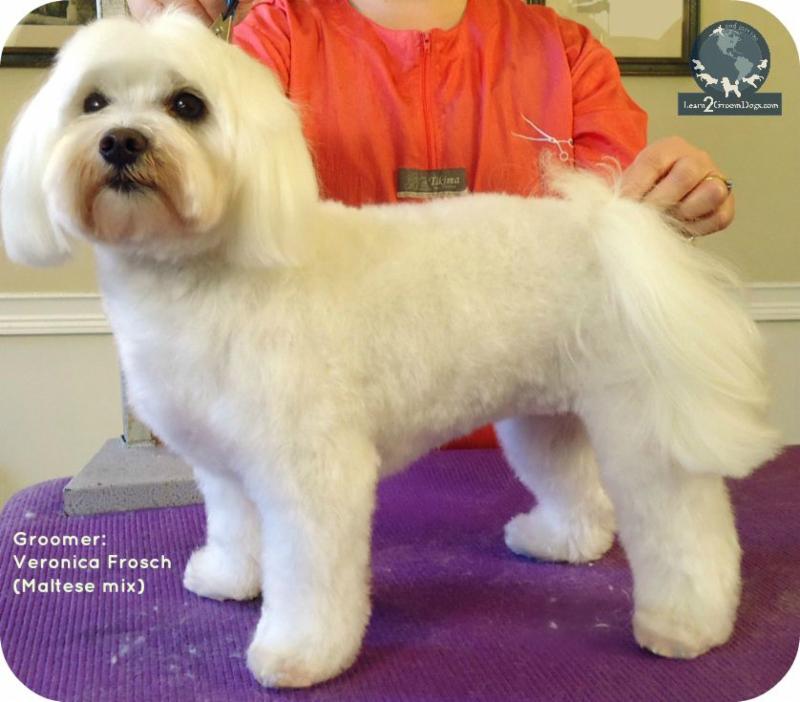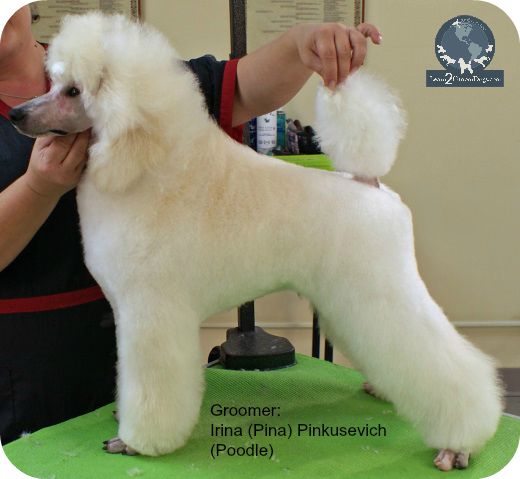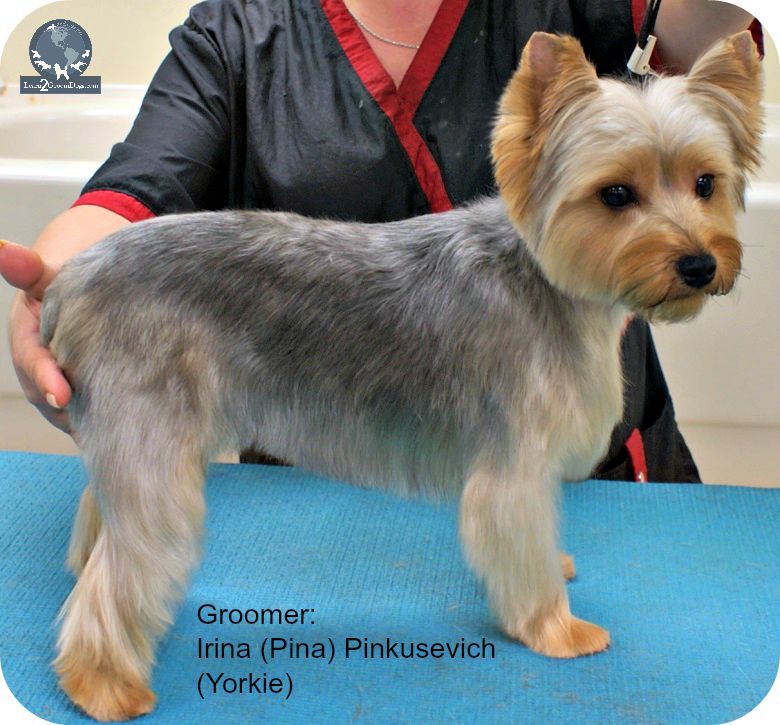 Don’t you love it when an owner walks into a salon and ask for this trim by name? They actually think this is a universal standard trim that all groomers and pet stylists should know how to do. When we start asking them questions, they get all huffy, thinking we don’t know how to do our jobs. Frustrating!! You and I know there isn’t a consistent right way to do a “puppy cut.” There are many – many variations!
Don’t you love it when an owner walks into a salon and ask for this trim by name? They actually think this is a universal standard trim that all groomers and pet stylists should know how to do. When we start asking them questions, they get all huffy, thinking we don’t know how to do our jobs. Frustrating!! You and I know there isn’t a consistent right way to do a “puppy cut.” There are many – many variations!
The puppy cut is one of the most popular haircuts. It works well on a wide variety of pets. From Shih Tzus to Doodles. From Pomeranians to Bichons. Almost any breed that grows longer coat can be done in this easy-to-care for style.
Yet, the puppy cut is also the most misunderstood haircut in grooming salons around the country. Why? There are no clear directions of what this trim actually is or how it should be done. It’s left up to individual personal interpretation by owners, groomers, or talented pet stylists.
The puppy cut started out as a trim style for Poodles. The puppy cut is a specific trim used on young Poodles in the dog show world. Once the puppy turns a year-old, they are put into the elaborate adult haircut for the conformation ring.
Today, the term “puppy cut” is used very loosely. It can apply to a wide variety of different breeds. It’s highly adaptable to any size of dog. Coats can be curly, wavy, or straight. Almost any purebred or mixed breed that grows hair looks appealing in a “puppy cut.”
 Many owners love this style of trim. It can be very cute. It’s easy to care for. It’s highly versatile. That’s a win-win-win for any busy family! The dog does not drag in dirt and debris from outdoors. Their ears do not drag in the food or water dish. The need for brushing between grooming appointments is minimized. And on smaller pets, bathing between grooming appointments is a breeze. When done well, it can be extremely attractive, to boot.
Many owners love this style of trim. It can be very cute. It’s easy to care for. It’s highly versatile. That’s a win-win-win for any busy family! The dog does not drag in dirt and debris from outdoors. Their ears do not drag in the food or water dish. The need for brushing between grooming appointments is minimized. And on smaller pets, bathing between grooming appointments is a breeze. When done well, it can be extremely attractive, to boot.
So what is it?
Essentially, the puppy cut is one length all over. The most common length is between 1-2 inches over the body, legs, tail, head, and ears. Typically, it’s done with a clipper fitted with a long guard comb over the blade. There should not be any clipper marks, uneven coat, or sharp edges left in the fur. Next to a powerful clipper, high quality blenders are your best friends when doing this trim. Everything is soft and plush, like a fluffy puppy.
The term “puppy cut” can be tricky. In some circles the puppy cut can also be known as the “teddy bear trim”, “summer cut”, or “kennel cut.” I’ve even seen some salons turn their version of the trim into their “signature haircut.” So the puppy cut becomes “The Posh Pet Special” (brilliant marketing by the way!) Generally, the only things that change between theses trims are the names and the length of coat.
 It’s important to keep this in mind, too: one person’s interpretation of a puppy cut might be that of a smooth-coated puppy. Think Boxer, Pug, or Beagle. Another person’s interpretation would be that of a fluffier breed like a Shih Tzu, Bichon, or Poodle. There’s also a big difference between a four-week old puppy and a ten-week old puppy in terms of coat growth.
It’s important to keep this in mind, too: one person’s interpretation of a puppy cut might be that of a smooth-coated puppy. Think Boxer, Pug, or Beagle. Another person’s interpretation would be that of a fluffier breed like a Shih Tzu, Bichon, or Poodle. There’s also a big difference between a four-week old puppy and a ten-week old puppy in terms of coat growth.
With all these interpretations, there is a wide variance of what each individual dog will look like and what each owner expects their dog to look like. If an owner is requesting this trim for the first time, be prepared to discuss the trim in detail with the owner. DO NOT ASSUME YOU ARE BOTH ON THE SAME PAGE! Communication is the key to a happy customer.
Here is a great tip to remember when talking with clients: whoever is asking the questions controls the conversation. As groomers and pet stylists, we are problem solvers. Uncover the problems in five simple steps.
- Observe the pet as the client walks through the door. Let common sense guide your line of questions.
- Find the problem. Ask basic questions like, “Were you thinking of a short and smooth style or something a bit fluffier?” Letting the client talk will help uncover problem areas.
- Gather clues from what the client tells you and what you observe.
- Offer limited choices as you help the client solve the problem.
- Guide the questions in five areas of the pet: overall body – head – ears – legs/feet – tail.
 Here is a list of talking points when a new client request a “puppy cut.”
Here is a list of talking points when a new client request a “puppy cut.”
- In general, what is the look they are hoping for? Something smooth and sleek so it’s easy to care for? Or something that makes the dog look slightly fluffy, plush, and super cute?
- What is the lifestyle of the dog? Active? Sedentary? City dweller? Enjoys outdoor activities?
- What is the texture and coat density of the dog? Fine, thin coats will looks shorter than dense coated dogs even with the same length clipper blade.
- How much length do they want left on the body? What about on the legs? Feet?
- What type of head style would they prefer?
- Depending on the pet’s ear set, ear styles can change dramatically (dropped ear or pricked and pointed). How do they want them styled? Long? Short? In-between?
- Do they want a long coat left on the tail or trimmed down to match the body? Or something in-between?
It’s important to have a thorough conversation with the owner when considering this haircut. There are so many variances with a puppy cut. Simply having the client state they want one is not specific enough.
Advise the client about trim options that would work best for their dog. Based on the condition of the coat and your pet’s body structure, you will be able to offer some valuable suggestions. A skilled pet professional will know how to make minor changes to the trim enhancing the pet’s appeal. Maybe the pet’s coat is too tangled to do the longer trim today. You’ll be able to suggest alternatives on how to modify a trim that works best as you discuss options for future trims.
Educating clients on proper pet hygiene is a valuable service most salon offer for free to their clients. In order to keep the dog looking its best, you can advise the client on how to best maintain this haircut between grooming appointments. At home brushing and bathing can make a big difference in how they look and smell, too. You can also make suggestions on how often the trim should be done based on the pet’s life style and coat texture. Maybe you suggest they get a full haircut every 4-6 weeks. Or maybe a maintenance program would be better suited for the client when you see them for weekly or bi weekly appointments.
Always remember, your clients are the lifeblood of your business. Taking a little extra time up front for a warm and welcoming pet consultation will go a long way toward building a solid relationship with them.
There is a good reason why the “puppy cut” is one of the most popular trims in grooming salons around the country. There are many – many variations!
~Melissa
P.S. You can make this and ALL grooming conversations easier and more successful.

